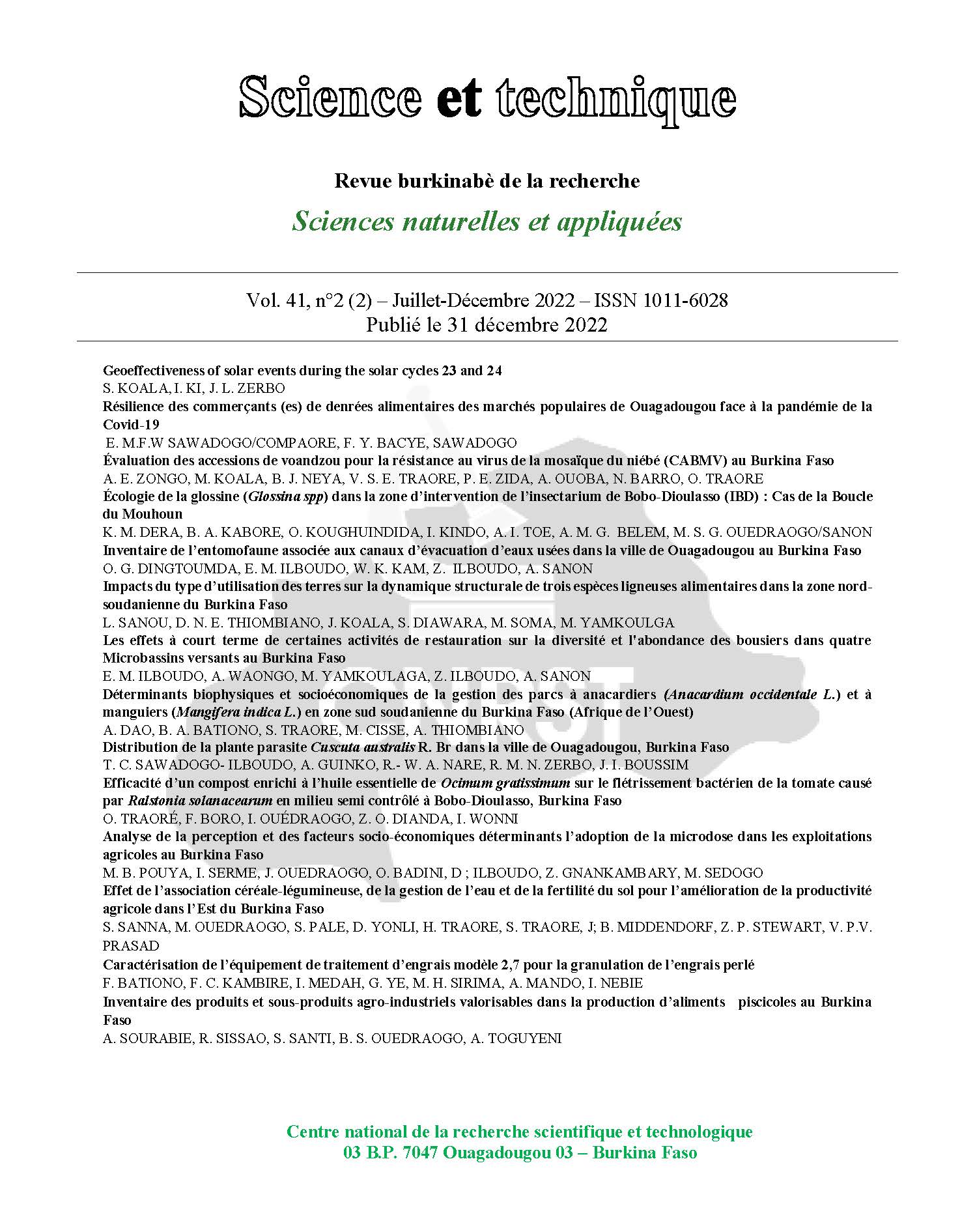Effect of cereal-legume intercropping, water and soil fertility management on improving agricultural productivity in Eastern Burkina Faso
Keywords:
cereal-legume intercropping, soil fertility, water management, agricultural productivityAbstract
The population in sub-Saharan Africa is growing exponentially, making meeting its food and nutrition
needs a major concern. Land use intensification is one of the agricultural strategies to increase
productivity and labor utilization per unit of cultivable land. Intercropping, tillage and soil amendment
were targeted in this study in an integrated soil and water fertility management approach. The
experimental design used is a completely randomized block with a split-split-plot treatment arrangement
with three (03) replications. Three tillage methods, namely (1) "0 tillage", (2) ploughing and (3)
partitioned ridging were used in the main plots to manage water resources. These main plots were
subdivided into subplots on which one (01) or two (02) rows of sorghum alternated with one (01) or two
(02) rows of cowpea with erect or creeping habit were cultivated. These sub-plots were then amended
with four (4) levels of fertilization. Results showed that rainfall, cropping system and their interaction
influenced emergence rate and numbers of harvested hills and plants of sorghum and cowpea. In contrast,
sorghum plant height and chlorophyll content were influenced by rainfall, soil amendment (SA), and the
interactions between rainfall and water conservation technique (WCT) and between WCT and sorghumcowpea intercropping system. TCE, SA and sorghum-cowpea intercrop significantly influenced sorghum
productivity. The panicle and grain yields were improved by the partitioned ridging in interaction with
organo-mineral fertilization of 2.5 t compost+100 kg NPK+50 kg urea ha-1. Intercropping of one or two
rows of sorghum alternated with one or two rows of erect or creeping cowpea in interaction with
ploughing or partitioned ridging or their interaction with organo-mineral fertilization improved sorghum
panicle production by 21-62% and about 200% respectively.

